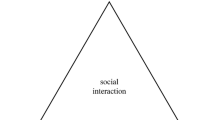Abstract
This research aimed to identify the components of communication systems in universities and to explore their influence on academic life. To collect data, interviews were carried out with academics from Australian universities. Thematic descriptive and content analyses were performed on the data-set. Analyses showed that the human relations unit, deanship office, academic board, newsletters, academic and public events, tea/coffee/lunch meetings, social activities and celebrations are common formal and informal channels of communication in universities. Academic support mechanisms also provide various communication opportunities such as professional interactions during staff training, collegial evaluation on grant proposals, and intellectual discussions at public events. Access to top management and mentoring between senior and junior academics are other important kinds of communication. The results revealed that good communication systems are an essential component of a participative, collaborative and interdisciplinary work environment, and as such a positive environment noticeably contributes to academics’ individual and collective productivity.
Similar content being viewed by others
References
Bakan, I., & Buyukbese, T. (2004). Örgütsel iletisim ile iş tatmini imsurlan arasmdaki ilişkiler: Akademik örgütler için bir alan araştirmasi [Relations between organisational communication and aspects of job satisfaction: A field study for academic organisations]. Akdeniz Üniversitesi İktisadi ve İdari Bilimler Fakültesi Dergisi, 7, 1–30.
Beytekin, O. F., & Arslan, H. (2013). The function of communication in faculty management. Social Change Review, 11, 137–152. doi:10.2478/scr-2013-0019
Bossio, D., Loch, B., Schier, M., & Mazzolini, A. (2014). A roadmap for forming successful interdisciplinary education research collaborations: A reflective approach. Higher Education Research & Development, 33, 198–211. doi:10.1080/07294360.2013.832167
Creswell, J. W. (2013). Qualitative inquiry and research design: Choosing among five approaches (3rd ed.). Thousand Oaks, CA: Sage.
Darwin, A., & Palmer, E. (2009). Mentoring circles in higher education. Higher Education Research & Development, 28, 125–136. doi:10.1080/07294360902725017
Dowling-Hetherington, L. (2013). The changing shape of university decision-making processes and the consequences for faculty participation in Ireland. Tertiary Education and Management, 19, 219–232. doi:10.1080/13583883.2013.790071
Gizir, S., & Simsek, H. (2005). Communication in an academic context. Higher Education, 50, 197–221. doi: 10.1007/s 10734-004-6349-x
Gratz, R. D., & Salem, P. J. (1981). Organisational communication and higher education (AAHE-ERIC/Higher Education Research Report No. 10). Washington, DC: American Association for Higher Education.
Horan, S. M., & Benington, J. H. (2000). A protocol for using electronic messaging to facilitate academic committee deliberations. Journal of Higher Education Policy and Management, 22, 187–197. doi:10.1080/713678143
Hoy, W. K., & Miskel, C. G. (2013). Educational administration: Theory, research, and practice (9th ed.). New York, NY: McGraw-Hill.
McCaffery, P. (2010). The higher education manager’s handbook: Effective leadership and management in universities and colleges (2nd ed.). Abingdon: Routledge.
Miles, M. B., & Huberman, A. M. (1994). Qualitative data analysis: An expanded sourcebook (2nd ed.). Thousand Oaks, CA: Sage.
Miles, M. B., Huberman, A. M., & Saldana, J. (2014). Qualitative data analysis: A methods sourcebook (3rd ed.). Thousand Oaks, CA: Sage.
Ngo, J., de Boer, H., & Enders, J. (2014). The way deans run their faculties in Indonesian universities. Tertiary Education and Management, 20, 1–13. doi:10.1080/13583883.2013.848924
Pignata, S., Lushington, K., Sloan, J., & Buchanan, F. (2015). Employees’ perceptions of email communication, volume and management strategies in an Australian university. Journal of Higher Education Policy and Management, 37, 159–171. doi:10.1080/1360080X.2015. 1019121
Robertson, E. (2005). Placing leaders at the heart of organisational communication. Strategic Communication Management, 9, 34–37.
Shattock, M. (2003). Managing successful universities. Maidenhead: Open University Press.
Shattock, M. (2006). Managing good governance in higher education. Maidenhead: Open University Press.
Stake, R. E. (2006). Multiple case study analysis. New York, NY: Guilford Press.
Thomas, J. D., Lunsford, L. G., & Rodrigues, H. A. (2015). Early career academic staff support: Evaluating mentoring networks. Journal of Higher Education Policy and Management, 37, 320–329. doi:10.1080/1360080X.2015.1034426
Thornhill, A., Lewis, P., & Saunders, M. N. K. (1996). The role of employee communication in achieving commitment and quality in higher education. Quality Assurance in Education, 4, 12–20. doi:10.1108/09684889610107995
Uslu, B., & Arslan, H. (2015). The relationship between organisational communication and organisational climate in universities. In K. Norley, M. A. Icbay, & H. Arslan (Eds.), Contemporary approaches in education (pp. 271–284). Frankfurt: Peter Lang.
van der Weijden, I., Beider, R., van Arensbergen, P., & van den Besselaar, P. (2015). How do young tenured professors benefit from a mentor? Effects on management, motivation and performance. Higher Education, 69, 275–287. doi:10.1007/sl0734-014-9774-5
Wood, J. (1999). Establishing internal communication channels that work. Journal of Higher Education Policy and Management, 21, 135–149. doi:10.1080/1360080990210202
Yilmaz, E. (2005). Okullarda örgütsel güven ölçeğinin geçerlik ve güvenirlik çahsmasi [The validity and reliability studies of the Scale of Organisational Trust in Schools]. Selçuk Üniversitesi Sosyal Bilimler Enstitüsü Dergisi, 14, 567–580.
Yin, R. K. (2003). Case study research: Design and method (3rd ed.). Thousand Oaks, CA: Sage.
Author information
Authors and Affiliations
Corresponding author
Rights and permissions
About this article
Cite this article
Uslu, B. The components of communication systems in universities: their influence on academic work life. Tert Educ Manag 24, 34–48 (2018). https://doi.org/10.1080/13583883.2017.1359662
Received:
Accepted:
Published:
Issue Date:
DOI: https://doi.org/10.1080/13583883.2017.1359662




